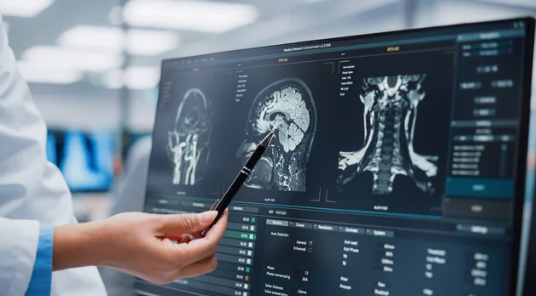Medical imaging like MRI scans often feels cold and technical, but it can tell a powerful story about a patient’s health journey. Visual narratives from these scans help patients and doctors see more than just images; they offer clear insights into the body’s condition in a way that connects emotionally and intellectually. Humanizing healthcare through MRI visual narratives improves understanding and helps patients feel more engaged in their care.
This approach breaks down complex medical procedures into clear steps, showing not only what happens during an MRI but also explaining the roles of the healthcare team. It makes the process less intimidating and builds trust by sharing information in a way patients can relate to. By focusing on the human side, MRI visual narratives help bridge the gap between technology and patient experience.
Doctors and care teams can use these narratives to better communicate results and guide treatment decisions, making healthcare more personal and effective. Visual storytelling through MRI scans creates a connection that supports both patients’ emotional needs and clinical goals.
Key Takeaways
- Visual narratives from MRIs improve patient understanding and involvement.
- Clear explanations make MRI procedures less intimidating.
- MRI storytelling helps doctors communicate results more effectively.
Humanizing Healthcare Through MRI Visual Narratives
MRI visual narratives combine images with stories to present medical experiences in a way that connects with patients and healthcare workers. These narratives help explain complex medical details, build empathy, and raise ethical questions about how medical images are shared and understood.
The Power of Storytelling in Medicine
Storytelling in medicine uses personal and visual accounts to make medical information clearer. MRI images tell the physical story of illness, but adding patient stories helps reveal emotional and human aspects.
Through storytelling, patients can express fears, hopes, and progress, making medical care more relatable. Healthcare providers gain insights into the patient’s experience beyond test results. This approach supports healing by addressing both medical and emotional needs.
Visual narratives create a bridge between clinical data and human experience, making MRI scans more than just diagnostic tools.
Bridging the Gap Between Patients and Professionals
MRI visual narratives reduce the distance between patients and healthcare professionals. Medical images are often technical and hard for patients to understand. When paired with stories or artwork, these images become easier to grasp.
This pairing helps patients better understand their condition, treatment options, and recovery processes. It also encourages open communication, making patients feel heard and more involved in their care.
Professionals can see patient experiences from a new angle, promoting empathy and improving care strategies.
Ethical Considerations in Visual Representation
Using MRI images in patient narratives raises ethical concerns. Protecting patient privacy is critical when sharing visual data. Images must be anonymized and shared with consent to avoid misuse.
Visual narratives should also avoid reinforcing stereotypes or bias. The representation of conditions must be fair and respectful, focusing on the patient’s dignity.
Healthcare providers should carefully balance transparency with sensitivity when using visual materials to ensure ethical standards are upheld.
Enhancing Patient Understanding and Empathy
MRI visual narratives improve patient understanding by turning complex scans into accessible stories. Visual art, combined with narration, helps explain what the images reveal about the body and illness.
This approach also builds empathy among caregivers and family members. Seeing and hearing patient experiences around MRI scans helps others appreciate the emotional and physical challenges faced.
Using visual narratives supports health literacy, encouraging patients to participate actively in their care. This makes healthcare more patient-centered and supportive.
Integrating MRI Visual Narratives in Clinical Practice
MRI visual narratives combine medical imaging with storytelling to improve patient understanding and engagement. These narratives rely on clear methods for creation, teamwork between experts and artists, and careful measurement of their effects on patient experience.
Methods for Creating Impactful MRI Stories
Creating effective MRI stories begins with selecting images that clearly show important medical details. Visual elements like color, contrast, and annotations are added to highlight specific areas.
Text accompanies images to explain medical terms in simple language. This makes the information easier for patients to grasp.
Stories often include personal experiences or creative elements such as poetry or art to connect emotionally. This helps make complex MRI data more relatable.
Visual narratives aim to bridge the gap between technical scans and patient comprehension by making the information accessible and humanized.
Collaborative Approaches Between Radiologists and Artists
Radiologists bring technical knowledge of MRI scans, while artists contribute skills in visual communication and creativity. Working together, they design visual stories that are medically accurate and visually engaging.
This partnership leads to narratives that maintain clinical integrity without losing patient focus. Artists help translate complex images into clear visuals that patients can understand.
Collaboration often extends to patients themselves, whose experiences shape the narrative content. This co-production enhances authenticity and relevance.
The combined effort improves education for both patients and healthcare professionals by blending science with art.
Measuring the Impact on Patient Experience
To assess the value of MRI visual narratives, patient feedback and comprehension tests are used. Improved understanding of medical conditions is a common outcome.
Studies show that visual stories reduce patient anxiety by providing clearer explanations than standard reports. Patients feel more involved in their care.
Tracking changes in communication between doctors and patients reveals better dialogue and trust. Visual narratives encourage questions and discussions.
Quantitative and qualitative data help refine these narratives, ensuring they meet patient needs effectively. Measurement is key to ongoing improvement.
Also Read :
